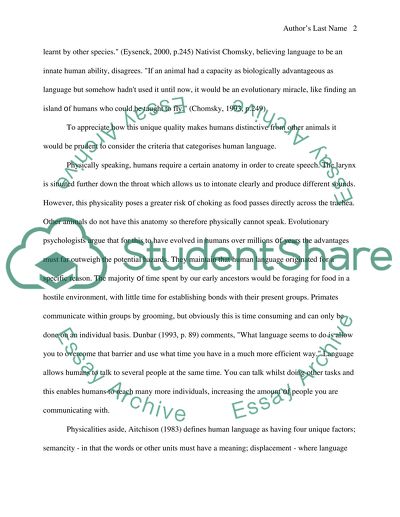Cite this document
(“Human Language Essay Example | Topics and Well Written Essays - 1500 words”, n.d.)
Human Language Essay Example | Topics and Well Written Essays - 1500 words. Retrieved from https://studentshare.org/anthropology/1503548-human-language
Human Language Essay Example | Topics and Well Written Essays - 1500 words. Retrieved from https://studentshare.org/anthropology/1503548-human-language
(Human Language Essay Example | Topics and Well Written Essays - 1500 Words)
Human Language Essay Example | Topics and Well Written Essays - 1500 Words. https://studentshare.org/anthropology/1503548-human-language.
Human Language Essay Example | Topics and Well Written Essays - 1500 Words. https://studentshare.org/anthropology/1503548-human-language.
“Human Language Essay Example | Topics and Well Written Essays - 1500 Words”, n.d. https://studentshare.org/anthropology/1503548-human-language.


